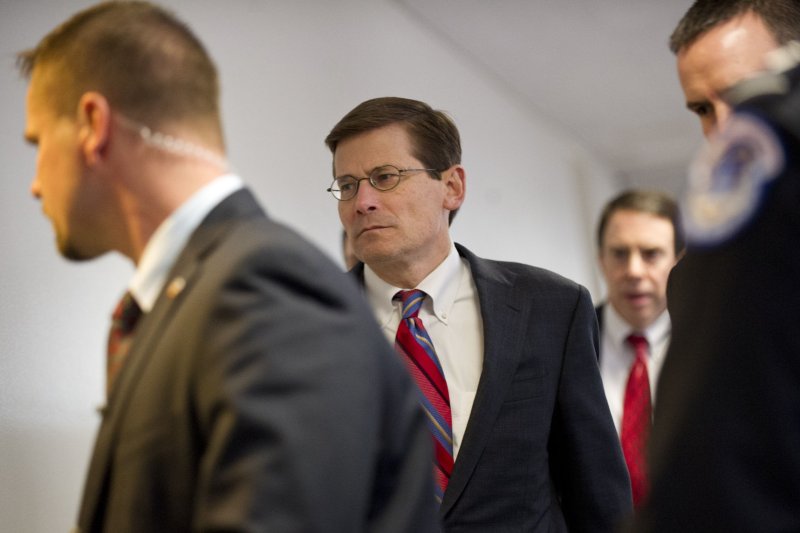Former Acting CIA Director Michael Morell. UPI/Kevin Dietsch |
License Photo
WASHINGTON, April 2 (UPI) -- In a rare public hearing Tuesday, the former CIA chief who was in charge when an American installation in Benghazi, Libya, was attacked in 2012 pushed back on Republican accusations the agency had deliberately misled the public over the attack's events and who was responsible for them.
Then-Deputy Director Michael Morell categorically denied he or any members of the CIA made changes to a set of declassified talking points for political reasons, nor did they downplay the seriousness of the Sept. 11, 2012 attack that killed four Americans, including Libya ambassador Christopher Stevens.
"There are things that we should have done differently" in making information public," Morrell told members of the House Intelligence Committee. "But none of our actions were the result of political influence in the intelligence process. None."
Morell, who has testified before closed sessions of the committee on multiple occasions, expressed frustration that the tack of the investigation had been to focus on the chronology of changes to a set of talking points -- now infamous for when then-U.N. Ambassador Susan Rice went on the Sunday talk shows and blamed a YouTube video for sparking a protest that later turned violent.
The talking points, requested by the committee's ranking member, Rep. Dutch Ruppersberger, D-Md., were subject to a series of changes that Morell classified as "editorial" rather than "substantive."
"To be very clear, the White House did not make any substantive changes to the talking points, nor did they ask me to make any substantive changes to the talking points," he said.
The original draft of the talking points had also included references to warnings made by the CIA in the days before the attack. Morell said those references were removed not to protect the State Department and the FBI from embarrassment, but because he saw them as the CIA "pounding its chest" and it was inappropriate to publicly level accusations at other agencies without beginning the discussion privately.
Morell also detailed the sequence of events in which he learned that the CIA's initial assessment, that there had been a protest outside the U.S. installation and extremists had made an "opportunistic" attack. He said the assessment was made based on news and intelligence reports made in the days following the attack, and it was not until four days later, on September 15, that he received an email from the station chief saying there was no protest.
"Upon reading the email, I immediately recognized the discrepancy between the station chief and the intelligence community’s view," Morell said, adding that he passed the station chief's concerns on to analysts.
"Based on the totality of the information made available to them, they stuck to their original conclusion," he said. "I did not hide, nor did I downplay the station chief’s assessment."
In the end, Morell said, it is still unclear if the YouTube video may have been part of the motivation behind the attack. Instead, he said analysts believe it could have been related to the video or revenge for the death of al Qaida leader Abu Yahya al-Libi.
“We never thought that a protest and a terrorist attack were mutually exclusive," Morell said, adding, "There’s a difference between what it was, which was a terrorist attack, and what motivated it. Those are two completely different things."
"No doubt it was a terrorist attack," he said. "To this day, we still don’t know the motivations of the people who conducted the attack because we haven’t caught any of them."















